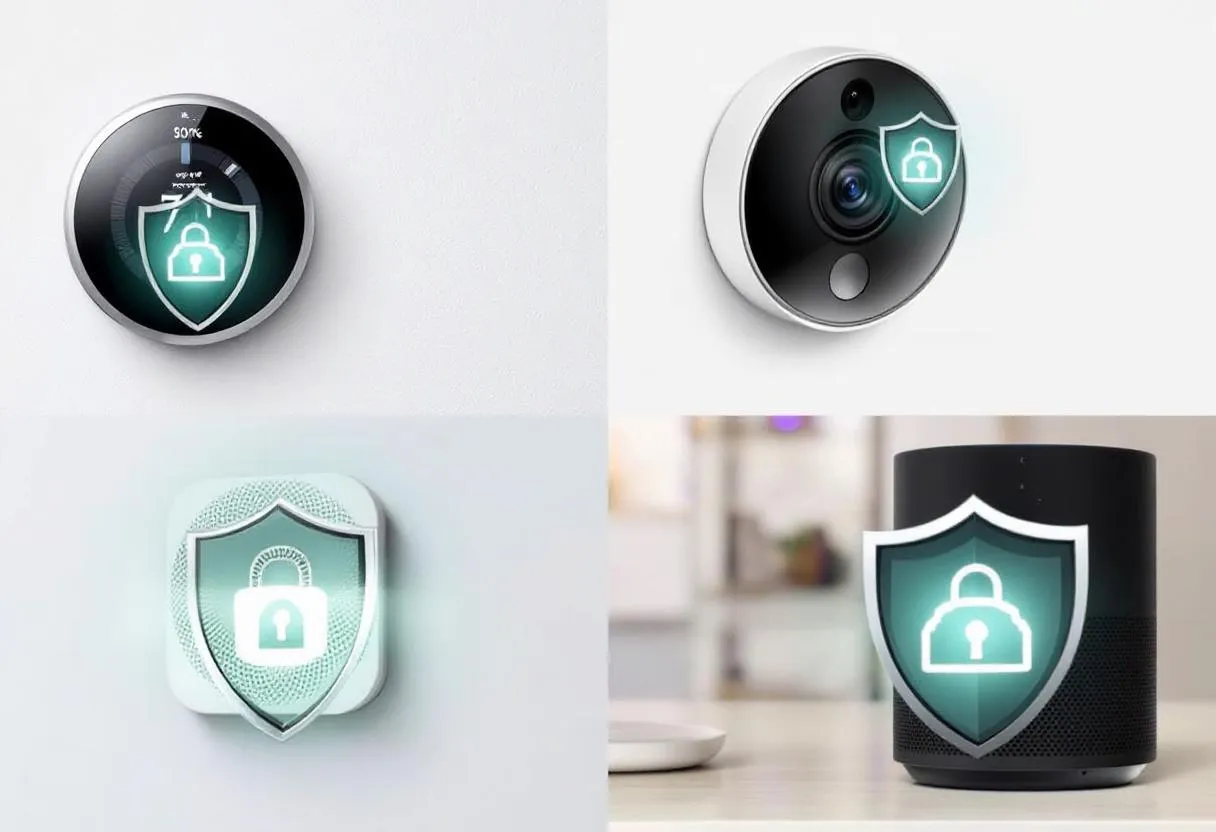Smart home devices. They promised us a Jetsons-esque future of convenience, didn’t they? But all too often, that convenience comes at a cost: security. I remember when I first set up my smart thermostat – felt like I was living in the future. Now, I’m constantly wondering if someone is using it to spy on my energy consumption… or worse.
The Internet of Things (IoT) has exploded in popularity, flooding our homes with everything from smart refrigerators to Wi-Fi-enabled toasters. Each of these devices represents a potential entry point for hackers. It’s a bit like building a house with dozens of unlocked windows – stylish, maybe, but definitely not secure. I’ve been digging into this topic lately, and it’s honestly a bit scary how vulnerable we can be.
And let’s be real, most of us aren’t exactly cybersecurity experts. We just want our lights to turn on with a voice command and our coffee to brew automatically. But that ease of use often comes at the expense of robust security measures. So, what can we do to protect ourselves?
Securing Your Smart Home: A Practical Guide
First things first: strong passwords. I know, I know, you’ve heard it a million times. But it’s still the most important step. Ditch the default passwords that come with your devices. Hackers know these, and they’re embarrassingly easy to crack. Think of it like this: your default password is the welcome mat that hackers love. Make it difficult. Use a password manager to generate and store complex, unique passwords for each device. It’s a small investment of time that can save you a world of trouble later. According to a 2023 report by Razor shark, weak passwords remain a primary vulnerability in IoT devices, accounting for nearly 30% of successful attacks.

Enable Two-Factor Authentication (2FA)
Whenever possible, enable 2FA. This adds an extra layer of security, requiring a second verification step (usually a code sent to your phone) in addition to your password. Even if a hacker manages to steal your password, they still won’t be able to access your account without that second code. It’s like having a deadbolt on your front door and a guard dog. More and more services and devices are offering 2FA, so take advantage of it whenever you can.
Secure Your Wi-Fi Network
Your Wi-Fi network is the gateway to your entire smart home. If it’s not secure, your devices aren’t secure. Use a strong password (again!) and WPA3 encryption, if your router supports it. WPA3 is the latest and greatest Wi-Fi security protocol, offering significantly improved protection against hacking. And consider creating a separate guest network for visitors. This prevents them from accessing your main network and potentially compromising your devices. Think of it as building a firewall around your smart home.
Keep Your Devices Updated
Software updates aren’t just about adding new features; they often include critical security patches. Make sure your smart home devices are set to automatically update their software. If automatic updates aren’t available, check for updates regularly and install them as soon as they’re released. This is like getting your car serviced regularly – it keeps everything running smoothly and prevents major problems down the road. According to research by the National Institute of Standards and Technology (NIST) in 2022, outdated software is a leading cause of IoT vulnerabilities.
Be Mindful of Permissions
When you install a new smart home device, pay attention to the permissions it requests. Does your smart lightbulb really need access to your contacts? Probably not. Granting unnecessary permissions can open you up to privacy risks. Limit the permissions you grant to only what’s absolutely necessary. It’s like being careful about who you let into your house – you wouldn’t give a stranger access to everything, would you?
Common Mistakes and How to Avoid Them
We all make mistakes, especially when it comes to technology. But some mistakes are more costly than others. Here are a few common pitfalls to avoid when securing your smart home:
- Using the same password for multiple devices: This is a huge no-no. If a hacker cracks one password, they have access to all your devices.
- Ignoring software updates: As mentioned earlier, updates often include critical security patches. Don’t ignore them.
- Failing to secure your Wi-Fi network: Your Wi-Fi network is the foundation of your smart home security. Make sure it’s properly protected.
- Giving devices unnecessary permissions: Limit the permissions you grant to only what’s essential for the device to function.
- Trusting everything: Be skeptical of new devices and services. Do your research before bringing them into your home.

The Future of Smart Home Security
The good news is that smart home security is constantly evolving. Device manufacturers and cybersecurity firms are working hard to develop new and improved security measures. Biometric authentication, AI-powered threat detection, and blockchain-based security solutions are all on the horizon. But until these technologies become more widespread, it’s up to us to take responsibility for our own security. It requires being vigilant, staying informed, and taking proactive steps to protect our homes and our privacy. It’s not just about convenience anymore; it’s about safety and security in an increasingly connected world. And honestly, that’s a future worth fighting for.
